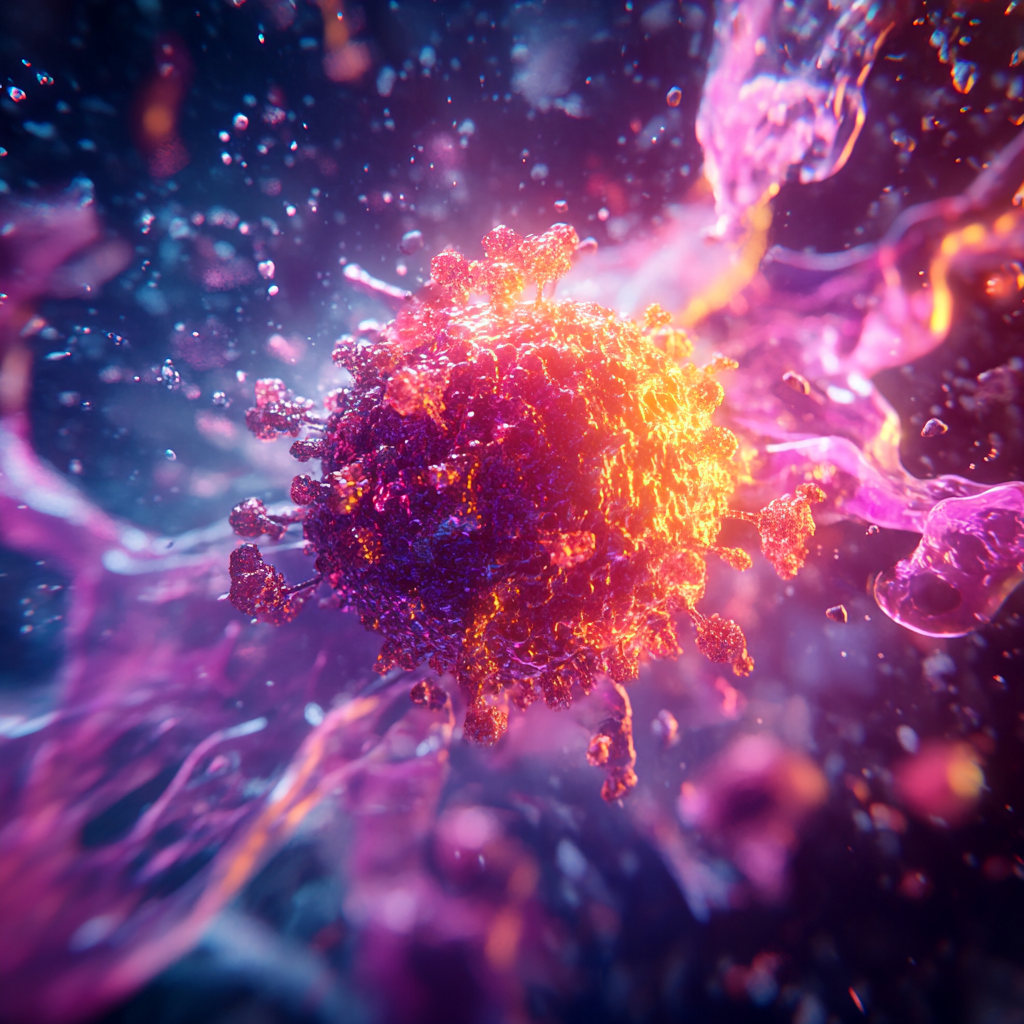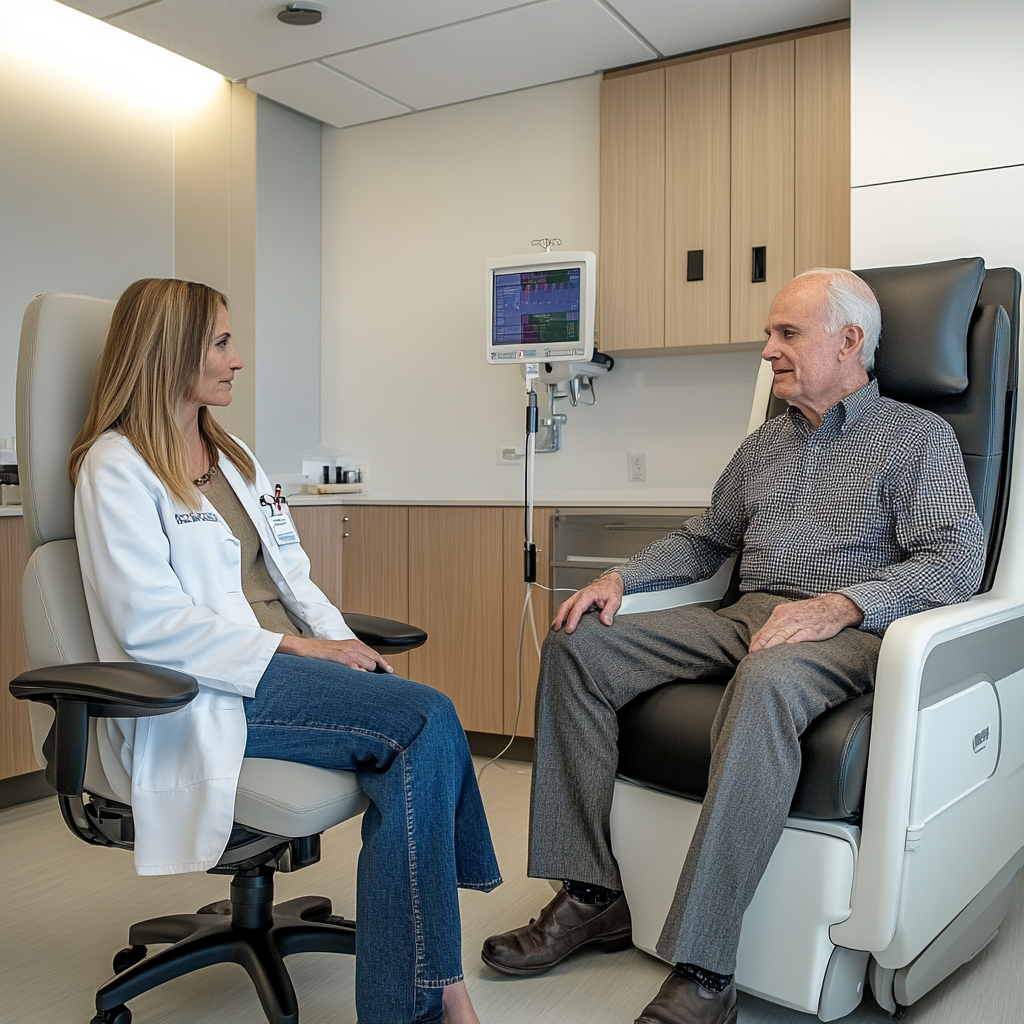Table of Contents
- Introduction: What Is Virotherapy?
- The Science Behind Oncolytic Viruses
- How Virotherapy Is Administered
- Subjective vs. Objective Improvements
- Prophylactic Use: Extending Recurrence-Free Survival
- Stabilizing Disease and Reducing Metastasis
- The Importance of Therapy Tolerability
- Key Takeaways
- Disclaimer
1. Introduction: What Is Virotherapy?
Virotherapy is a relatively new form of cancer treatment that harnesses the power of viruses to identify and destroy malignant cells. Known as oncolytic viruses, these specialized agents don’t merely target tumors; they also activate the body’s natural defense mechanisms to help fight cancer.
In the case of melanoma, virotherapy has shown particular promise. As more patients seek less invasive and more targeted treatments, virotherapy’s unique combination of precision and immune stimulation continues to attract attention within the medical community.
2. The Science Behind Oncolytic Viruses

Oncolytic viruses are engineered or selected to infect and kill cancer cells while leaving healthy cells largely unharmed. Once inside a tumor cell, these viruses replicate until the cell bursts, releasing additional viral particles and tumor antigens into the body. This process accomplishes two major goals:
- Direct Destruction of Cancer Cells: The virus replicates in tumor cells, causing them to break apart (lysis).
- Immune System Activation: The release of tumor antigens alerts the immune system to the cancer’s presence, helping it recognize and attack remaining malignant cells.
By triggering both direct cell death and a broader immune response, oncolytic viruses can potentially reduce tumor mass, limit metastasis, and lower the likelihood of relapse.
3. How Virotherapy Is Administered

Most virotherapy treatments are delivered through intramuscular injections, allowing for an outpatient treatment schedule tailored to each patient. The frequency and duration of therapy depend on factors such as:
- Patient’s Overall Health
- Stage and Type of Cancer
- Lab Results and Imaging Studies
- Doctor’s Assessment
Some patients report feeling better after just one injection, though more noticeable improvements often emerge between the third and sixth month of treatment. As with any therapy, individual responses can vary widely.
4. Subjective vs. Objective Improvements
Like most medical interventions, virotherapy can yield both subjective and objective benefits:
- Subjective Improvements: These include enhanced well-being, increased energy, and reduced discomfort. In prophylactic (preventive) settings, patients may measure success by how well they feel and how long they go without experiencing a recurrence.
- Objective Improvements: These are verifiable changes measured through blood tests, scans, and other diagnostic tools—such as reduced tumor size or decreased markers of disease. For patients receiving virotherapy to combat metastatic or advanced cancers, stabilizing or shrinking tumors is often a primary goal.
5. Prophylactic Use: Extending Recurrence-Free Survival
Patients who receive virotherapy as a preventive measure (for example, following surgery or other primary treatments) place a major emphasis on how long they can remain cancer-free. By fortifying the body’s immune response against residual cancer cells, oncolytic viruses may help delay or prevent the return of disease. Here, subjective well-being—feeling energetic and maintaining quality of life—becomes a crucial indicator of success.
6. Stabilizing Disease and Reducing Metastasis
For those battling more advanced stages of cancer, virotherapy aims to stabilize the disease and limit or reduce metastases. Treatment effectiveness in these cases is often judged by diagnostic evaluations and imaging results. This stable state can help patients live longer and more comfortably, making tolerable yet effective treatment strategies extremely valuable.
7. The Importance of Therapy Tolerability

A central advantage of virotherapy is that it is generally easier on patients compared to certain traditional treatments. While side effects can vary, they are typically manageable. Patients may experience:
- Mild flu-like symptoms (fatigue, low-grade fever)
- Redness or swelling at the injection site
- Occasional aches or discomfort
Because high tolerability often translates to better adherence, virotherapy can be especially appealing to those seeking treatment that won’t drastically compromise their everyday routines.
8. Key Takeaways
- Targeted Action: Oncolytic viruses specifically attack cancer cells, sparing most healthy tissues.
- Immune Boost: These viruses also stimulate the body’s defenses, helping to fight off new or remaining tumors.
- Flexible Treatment: Administered on an outpatient basis, virotherapy can be tailored to a wide range of patient needs.
- Subjective vs. Objective Success: Improved well-being and measurable tumor reduction can both be indicators of treatment success.
- Safety Profile: Patients often find virotherapy more tolerable than many conventional methods, making long-term adherence feasible.
9. Disclaimer
This article is for informational purposes only and should not replace professional medical advice. Always consult a qualified healthcare provider before making decisions about cancer treatment. Virotherapy’s effectiveness and potential side effects can vary significantly depending on the individual’s overall health, type of cancer, and other factors. Timely medical intervention, appropriate monitoring, and expert guidance are essential for safe and effective therapy.


